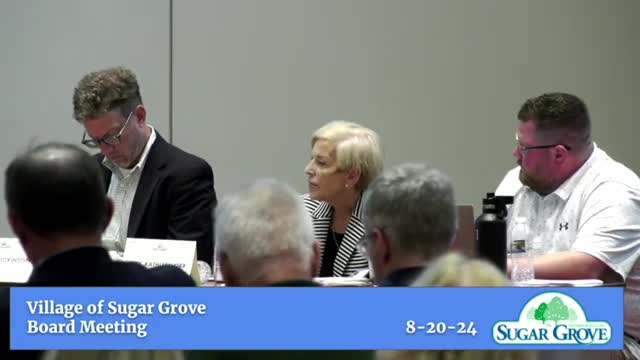Controversial development plan sparks debate over blight standards
August 20, 2024 | Sugar Grove, Kane County, Illinois

This article was created by AI summarizing key points discussed. AI makes mistakes, so for full details and context, please refer to the video of the full meeting. Please report any errors so we can fix them. Report an error »

In a recent government meeting, officials discussed the proposed development plan for newly annexed property, emphasizing its compliance with the village's comprehensive plan and the Tax Increment Financing (TIF) Act. The development is positioned as contiguous and aims to address blight standards, particularly concerning flooding issues linked to runoff from the area.
Key points raised included the necessity for the development to meet specific eligibility criteria under the TIF Act, which includes a thorough engineering study indicating that the area contributes to flooding in the watershed. This finding is crucial as it supports the argument for designating the land as eligible for TIF funding, which is intended to facilitate redevelopment in areas deemed blighted or underdeveloped.
Concerns were voiced regarding the interpretation of \"blight,\" with some officials questioning whether the land truly meets the statutory definition. One trustee highlighted that the area is not blighted in the traditional sense but rather underdeveloped, suggesting that the existing infrastructure challenges, particularly related to soil quality, should have been addressed differently.
The discussion also touched on the credibility of the studies conducted by different firms, with one trustee expressing skepticism about the aggressive nature of some analyses. The project director defended their approach, stating that their conclusions are based on thorough research and adherence to legal standards, emphasizing the importance of integrity in their findings.
As the board prepares to vote on the proposed ordinances, the outcome will hinge on whether they collectively agree that the redevelopment plan aligns with the TIF Act's requirements and the village's long-term goals. The meeting underscored the complexities involved in balancing development needs with regulatory compliance and community concerns.
Key points raised included the necessity for the development to meet specific eligibility criteria under the TIF Act, which includes a thorough engineering study indicating that the area contributes to flooding in the watershed. This finding is crucial as it supports the argument for designating the land as eligible for TIF funding, which is intended to facilitate redevelopment in areas deemed blighted or underdeveloped.
Concerns were voiced regarding the interpretation of \"blight,\" with some officials questioning whether the land truly meets the statutory definition. One trustee highlighted that the area is not blighted in the traditional sense but rather underdeveloped, suggesting that the existing infrastructure challenges, particularly related to soil quality, should have been addressed differently.
The discussion also touched on the credibility of the studies conducted by different firms, with one trustee expressing skepticism about the aggressive nature of some analyses. The project director defended their approach, stating that their conclusions are based on thorough research and adherence to legal standards, emphasizing the importance of integrity in their findings.
As the board prepares to vote on the proposed ordinances, the outcome will hinge on whether they collectively agree that the redevelopment plan aligns with the TIF Act's requirements and the village's long-term goals. The meeting underscored the complexities involved in balancing development needs with regulatory compliance and community concerns.
View full meeting
This article is based on a recent meeting—watch the full video and explore the complete transcript for deeper insights into the discussion.
View full meeting
